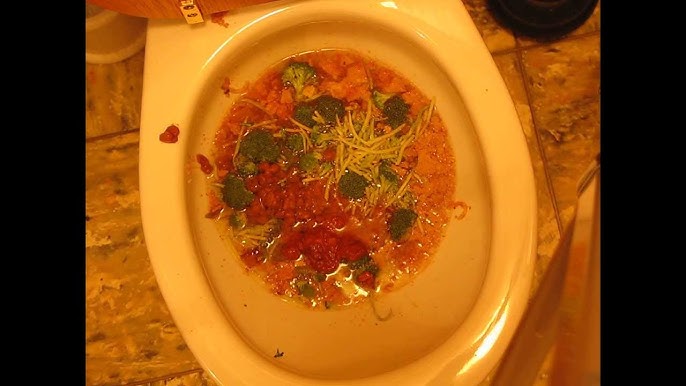Is it Wise to Flush Food Down the Toilet?
Is it Wise to Flush Food Down the Toilet?
Blog Article
We have stumbled upon this great article involving Think Twice Before Flushing Food Down Your Toilet directly below on the net and figured it made sense to discuss it with you here.

Intro
Many individuals are commonly confronted with the problem of what to do with food waste, particularly when it pertains to leftovers or scraps. One usual question that develops is whether it's alright to purge food down the bathroom. In this write-up, we'll delve into the reasons why people may consider flushing food, the consequences of doing so, and alternative approaches for correct disposal.
Reasons why people may consider flushing food
Absence of recognition
Some people may not be aware of the possible injury triggered by flushing food down the bathroom. They might mistakenly think that it's a harmless method.
Convenience
Flushing food down the bathroom might appear like a fast and easy remedy to taking care of unwanted scraps, particularly when there's no nearby trash bin available.
Laziness
Sometimes, people might simply choose to flush food out of sheer laziness, without considering the effects of their activities.
Effects of flushing food down the toilet
Environmental influence
Food waste that ends up in rivers can contribute to air pollution and harm aquatic communities. Furthermore, the water utilized to purge food can strain water resources.
Plumbing concerns
Flushing food can bring about clogged up pipes and drains, causing pricey pipes repair services and hassles.
Kinds of food that must not be flushed
Fibrous foods
Foods with fibrous textures such as celery or corn husks can obtain tangled in pipes and cause obstructions.
Starchy foods
Starchy foods like pasta and rice can soak up water and swell, leading to clogs in pipes.
Oils and fats
Greasy foods like bacon or food preparation oils must never be flushed down the bathroom as they can strengthen and create clogs.
Correct disposal approaches for food waste
Using a waste disposal unit
For homes furnished with garbage disposals, food scraps can be ground up and purged through the pipes system. Nonetheless, not all foods appropriate for disposal in this fashion.
Recycling
Certain food product packaging materials can be recycled, lowering waste and minimizing environmental influence.
Composting
Composting is an environmentally friendly way to deal with food waste. Organic materials can be composted and utilized to enrich dirt for gardening.
The importance of appropriate waste administration
Reducing ecological damage
Correct waste administration techniques, such as composting and recycling, help lessen pollution and maintain natural resources for future generations.
Shielding plumbing systems
By preventing the technique of flushing food down the bathroom, property owners can protect against pricey plumbing repairs and keep the honesty of their pipes systems.
Verdict
In conclusion, while it might be alluring to flush food down the bathroom for ease, it's important to recognize the possible repercussions of this activity. By taking on appropriate waste management techniques and getting rid of food waste properly, people can contribute to healthier pipes systems and a cleaner setting for all.
FLUSH FOOD DOWN THE TOILET?
FLUSHING FOOD CAN CAUSE BLOCKED DRAINS IN YOUR HOME
All of the plumbing fixtures in your home are connected to the same sewer pipe outside of your home. This outdoor sewer pipe is responsible for transporting all the wastewater from your home to the Council sewer mains. Even small pieces of food that go down the kitchen sink can cause problems for your sewer. It should therefore be obvious that flushing larger bits of food, such as meat, risks a clog in either the toilet itself or the sewer pipes. Flushing greasy food is even more problematic because oil coagulates when it cools, coating the interior lining of your pipes.
THE TOILET IS NOT A BIN
Food isn’t the only thing that people shouldn’t be flushing down the toilet. People use the toilet to dispose of all kinds of things such as tampons, makeup wipes, dental floss, kitty litter and even underwear. Water goes to great lengths to educate residents about the high costs and stress placed on wastewater treatment systems simply from people flushing the wrong stuff down the toilet. It costs taxpayers millions of dollars each year, and homeowners thousands in blocked drain repairs.
FLUSHING FOOD IS A WASTE OF WATER
Flushing food is a waste of our most precious resource - water. In June this year Level 1 water restrictions were introduced to protect water supply from drought conditions. Much of New South Wales continues to be affected by prolonged drought with recent figures revealing up to 97 per cent of the state remains in drought. Depending on whether you have a single or dual flush toilet, every single flush uses between five and 11 litres of water. In the current climate this is a huge amount of water to be wasting on flushing food that should be placed in the bin (or better yet, the compost).
https://www.jabplumbingsolutions.com.au/blog/can-you-flush-food-down-the-toilet

I'm very fascinated by Flushing Food Down the Toilet? and I'm hoping you enjoyed the new blog post. Don't hesitate to pause to share this page if you liked it. We truly appreciate your readership.
Call Today Report this page